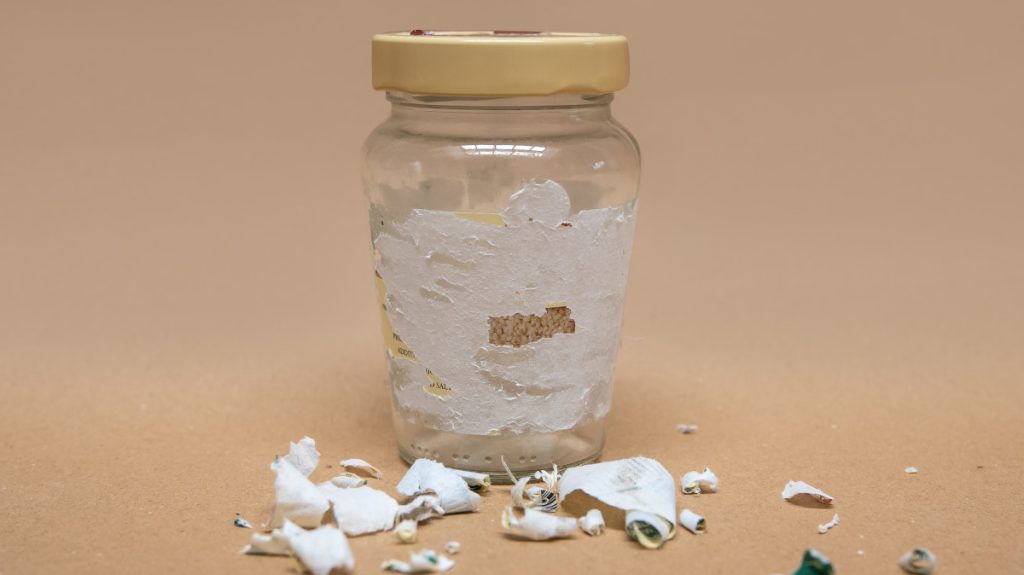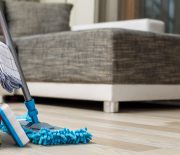
As the holiday season wrapped up, the festive spirit lingered in surprising places. Kids love stickers. They may have decorated the windows, furniture, walls, furniture, and clothing for Christmas. Now that the holidays are over, it’s time to clean up the mess and say goodbye to any remaining residue. It could be a real struggle, and potential damage to your belongings could be very disappointing. So learning how to remove sticker residue without causing any damage is a valuable skill to usher, whether you’re deep cleaning your apartment or house after the holidays or not.
Down under, where sunshine and surf are plentiful, the stickers can be seen almost everywhere, even on your favourite surfboard or t-shirt. When removing an adhesive-backed sticker or label, first start by peeling off as much of it with your fingers as possible. You may be tempted to scrape off the sticker with a knife or metal blade, but try to persist the urge. These tools can lead to surface scratches. As we dive into the cleaning tips on how to get sticker residue off, keep in mind that the Aussie way is about preserving the integrity of the belongings.
Soapy water solution
Use soapy water for gentle sticker removal from hard surfaces. In a bowl, make a cleaning solution by combining mild dish soap and warm water. Apply it to the sticky mess and soak it for a few minutes. Afterwards, gently rub away the residue with a soft cloth. Avoid oversaturation, especially on electronics or wooden surfaces.
Here are some common scenarios where using soapy water can be suitable:
- Paper stickers on glass – There are stickers commonly found on windows or glass surfaces, such as promotional decals or decorative labels. Soapy solutions can also be effective in removing glue residue. It helps break down the adhesive without damaging the glass.
- Water-soluble adhesive labels – Some labels, such as those used for temporary applications, use water-soluble adhesives. They are found on glassware, jars, or plastic containers. The soak method helps to get sticker residue off plastic without any damage.
- Stickers on synthetic fabric – Put the cloth in your freezer for an hour or more until it gets stiff. Then, pick off as much of the firmed residue as possible right away. Finally, apply a drop of dish soap and water to the remaining gunk and rub it with a microfiber cloth to finish up the job. Launder as usual.
Oil-based substances
Oil-based solutions are a natural and effective method to dissolve sticky labels without harming delicate surfaces. Common household oils like cooking oil, baby oil, or even peanut butter contain compounds that naturally break down the bonds in adhesives, making them excellent choices for removing sticky label residue.
This method is particularly suitable for delicate surfaces such as glass, plastic, and painted or varnished materials, where abrasive or harsh chemicals might cause damage.
Steps on how to dissolve sticky labels:
- Just dab a bit of your chosen oil right onto the sticker gunk, making sure it’s well-coated.
- Leave the oil to stay for about 10-15 minutes. It gives the oil enough time to break down the adhesive bonds.
- After letting it sit, gently rub the sticker residue with your fingers or a soft cloth. Apply a slight pressure to lift off the sticky material. If needed, repeat the process until the residue is fully vanished.
- Clean off any remaining oil residue with a clean cloth.
Commercial adhesive removers
Some stickers tend to stick more stubbornly to surfaces. This depends on the strength of the adhesive on the back of the sticker, the time the sticker has been on the surface, and some other factors. The majority of people wonder how to get sticker residue off. Here, the commercial cleaners come in handy.
Several reputable brands have gained recognition for their efficacy. Brands such as Goo Gone, Carbona Stain Devils No. 1., and Goof Off are widely trusted for their powerful formulations. Just remember to follow the manufacturer’s instructions carefully, and always test on a small area.
Commercial adhesive removers are specifically designed for use on durable surfaces, making them ideal for a wide range of materials. Even though some of them may apply to clothes, the most suitable surfaces are:
- Glass and windows
- Metal
- Plastic
- Wood
- Painted surfaces
Alcohol-based products
When tackling the challenge of getting rid of that stubborn sticker gunk, rubbing alcohol or hand sanitiser can be a good option. Alcohol-based solutions prove to be quite effective alternatives to commercial adhesive removers. They break down the sticky leftovers and then dry swiftly, leaving the surfaces squeaky clean. Rubbing alcohol, due to its high alcohol content, acts as a highly efficient solvent, whereas hand sanitiser is not that powerful but can still handle light to moderate residues. So, if you’re looking for safe glue remover techniques for solid surfaces, these alcohol-based options are gentle yet powerful choices.
Here’s an in-depth guide on how to use these products effectively:
What you will need:
- Rubbing alcohol or hand sanitiser (the alcohol content should be 70% or higher)
- Cotton balls or pads
- Soft cloth or paper towel
- Mild dish soap
- Warm water
Instructions:
- Remove as much of the sticker as possible with your fingers or a plastic scraper.
- Soak a cotton ball in the alcohol solution.
- Blot the soaked cotton onto the sticker residue.
- Let it sit for a few minutes.
- Gently rub the residue with a soft cloth or soaked cotton.
- Apply light pressure without damaging the surface.
- Use a clean, dry cloth to wipe away the loosened residue.
- Clear away any lingering remnants by using a cloth dampened in soapy water to clean the area.
- Open windows to ventilate the area if there is a stench.
- Ensure the cleaned surface is completely dry before use.
- Be cautious with painted surfaces.
Alternative household items
Sticker residue can be annoying, but fortunately, some unusual yet effective household items are surprisingly effective as home remedies for label glue. Below, you will find detailed information for each method.
Vinegar solution
Vinegar’s natural acidity has made it an effective tool for window cleaning, which is why it can be used to combat adhesive residue on hard surfaces like glass, ceramic, metal, and plastic.
Step-by-step instructions:
- First, in a bowl, combine equal parts of white vinegar and water.
- Damp a cloth in the solution. If the remnant is very sticky, let the solution sit for at least 10 minutes.
- Rub the dirty surface until the residue starts to lift.
- As the last step, wipe away the residue with a clean cloth and rinse the surface with pure water to remove any vinegar smell.
- Do not use on marble, stone, aluminium, or cast iron.
Baking soda paste
Baking soda, known for its powerful cleaning properties, is a great natural abrasive that helps eliminate the toughest sticky residue, which is why it is a popular choice for how to get rid of sticker residue on surfaces such as glass, ceramic, metal, and plastic.
Step-by-step instructions:
- Mix baking soda and a small amount of water until it forms a thick paste.
- Apply the paste to the residue and leave it for about 20 minutes to penetrate the adhesive.
- Then, gently rub onto the sticky spot with a plastic scraper or a toothbrush until the residue is gone.
- After the paste has sat for a few minutes, it can be rinsed off with water, leaving the surface clean and free of sticky residue.
Hairdryer (heat application)
Applying heat is a very effective way to loosen the adhesive found in sticker residue. Easily eliminate the sticker residue by employing the use of a hairdryer. This method is suitable for various surfaces, including delicate ones like painted walls and vinyl.
Step-by-step instructions:
- Turn on the hairdryer on low heat to warm the sticker residue.
- Hold it from a distance to prevent overheating.
- Heat for about 10-15 seconds, then peel it off with a plastic scraper, puffy knife, or fingers.
- Clean any remaining gunk with a damp cloth.
- Finish by cleaning the surface with a mild detergent.
Erasers (gentle scrubbing)
When it comes to getting rid of sticky residue, one unexpected hero takes the stage – the rubber eraser. Its effectiveness, particularly on delicate surfaces, is truly remarkable. The types of surfaces that are appropriate for this method include paper, cardboard, and specific types of plastics.
Step-by-step instructions:
- Choose a white eraser, as coloured erasers may leave stains.
- Gently rub the eraser over the sticker residue in a circular motion.
- Periodically brush away eraser debris with a soft brush or your hand.
- Continue until the residue is lifted off.
- Use a clean cloth to wipe off any remnants.
Toothpaste
To effectively remove sticker residue, toothpaste proves to be quite useful. It is specifically designed to incorporate mild abrasives that aid in lifting away unwanted sticky remnants. Toothpaste is the appropriate solution for removing residue from plastic and glass surfaces.
Step-by-step instructions:
- Apply a small amount of non-gel toothpaste directly to the sticker residue.
- Use a clean cloth to rub the toothpaste over the residue in a circular motion.
- Let it sit for a few minutes.
- Once the residue is lifted, use a fresh cloth to clean the surface and eliminate any lingering traces of the toothpaste.
- Polish the surface with a dry cloth.
- Do not use it on natural materials (like wood) or fabrics, as the ingredients in toothpaste may bleach the surface or leave behind stains.
Acetone
When it comes to dealing with tough adhesives, one powerful solution stands out – acetone. With its incredible solvent properties, acetone has the ability to break down and dissolve adhesives, leaving hard surfaces looking spotless once again.
Step-by-step instructions:
- Douse a cloth or cotton pad with acetone (nail polish remover).
- Let the cloth sit on the sticky pot for a few minutes.
- Use the damp cloth to rub the spot until it starts to dissolve gently.
- Use a clean cloth to wipe off any lefover gunk.
- Rinse the surface with pure water to remove any remaining acetone.
- Dry the surface thoroughly.
Packing tape
When it comes to removing sticker residue without causing any harm, packing tape is the ultimate saviour. Its gentle nature allows it to be perfectly suitable for dealing with tiny remnants on tiny remnants on delicate surfaces like painted walls and vinyl.
Step-by-step instructions:
- Peel off a piece of packing tape and put it to the sticker residue.
- Press down firmly and smooth it out.
- Peel off the tape, and the residue should come off with it.
- Repeat if necessary, using fresh tape each time.
- Before attempting to clean a surface, always test on a hidden section. This will avoid any potential damage to the surface.
Takeaways
- Mechanically remove as much residue as possible using a plastic scraper, packing tape, or a hair dryer before experimenting with household or chemical cleaners.
- Use soapy water, vinegar, cooking oil, or even peanut butter to saturate the adhesive, then wipe the spot clean with a cloth or paper towel.
- Try acetone, rubbing alcohol, or commercial cleaners on extra stubborn residue spots.
- Apply oily cleaning products exclusively on non-porous surfaces, and ensure that acidic or corrosive cleaners, such as vinegar, are kept away from stone and metals.
Feeling overwhelmed while attempting to remove tacky sticker residue?
Let us help you!
If you have any additional tips or tricks that were not covered in this article, please share them with us in the comments section below.








